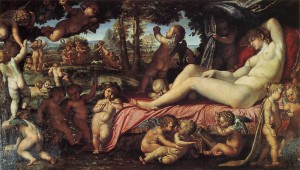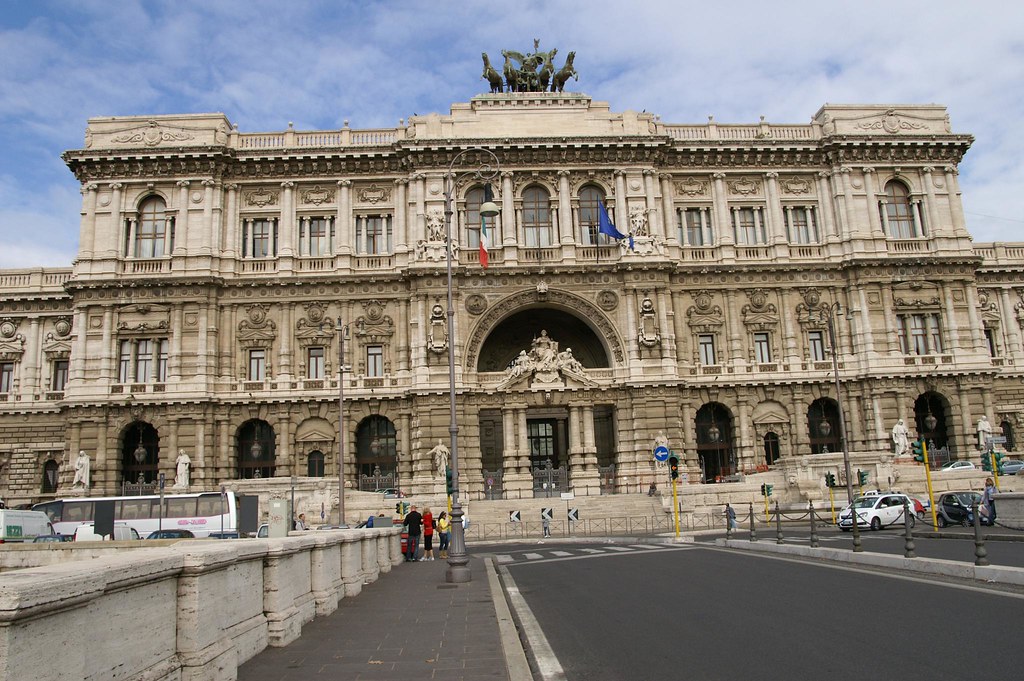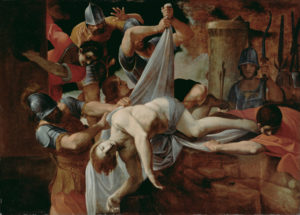Eclectism was characterized by revival and mixing of previous styles, including: Chippendale Style, Hepplewhite Style, Sheraton Style, Biedermeier Style, Louis Philippe Style, Victorian Style, Regency Style and Second Empire Style.

Image Source: https://search.creativecommons.org/photos/16264fb1-e32e-4280-9f0c-4442eaae4c91 by cometstarmoon
Eclectic Art
The first person who used the term “eclectic” into the world of art is Johan Joachim Winckelmann, German art historian and archaeologist. This term was meant to be employed for the works of Carracci, who conceived his painting combining classical tradition with the elements of Renaissance.

Image source: https://en.wikipedia.org/wiki/Sleeping_Venus_(Carracci)
The eclectic style is not a particular style. It is all about borrowing a variety of styles and combining them to create a single project. It is more than just putting everything together, eclectic design works to make all these different styles come together. Elements are thoughtfully connected with the other parts of the style in the space. The finish tend to be neutral to help these different sensibilities come together and avoid a chaotic look.

Image source: https://search.creativecommons.org/photos/e2c70be5-ab7d-4736-913c-3d39285adf91
Eclecticism in art
Eclecticism hardly ever constituted a specific style also in art: it is featured with a combination of elements borrowed from different historical styles in architecture, painting, and decorative arts.
Indeed, Agostino, Annibale and Lodovico Carracci tried to put together in their art Michelangelo’s line, Titian’s color, Correggio’s chiaroscuro, and Raphael’s symmetry and grace.

In the 18th century, Sir Joshua Reynolds, one of the most influential advocates of this style. In the sixth of his famous academical Discourses, he wrote that the painter had use the work of the predecessors as a:
“magazine of common property, always open to the public, whence every man has a right to take what materials he pleases” (Reynolds 1775).

Image source: https://search.creativecommons.org/photos/000db1f8-db57-4e30-9d9a-8d722ed61311 by DJANDYW.COM
Eclectic Architecture
This style was featured with the use of themes of various pervious historical styles. Architects had complete freedom of choice dealing with architectural and ornamental motifs. eclectism wanted the creation of large urban ensembles in the Russian or European style. Facades of eclectic style architecture, gave the front of the building a huge relief and charm. This main characteristics of this movement can be found in the following example, for sure one of the best known churches in the world.

Image source:https://search.creativecommons.org/photos/60946774-e6a4-45c9-959c-7ba1e420b53f by naotakem
La Salle, IL. Hegeler Carus Mansion, is another useful example to better understand this style. The mansard is the key element that typically allows for an identification. It includes dormer windows on the upper floor, providing light behind the mansard roof. The floor plan features pavilions, which are outward projections of a building’s center or side.

Image source: https://search.creativecommons.org/photos/0fcb7384-fd80-4db3-a39a-9156a81d829a by Jorge Lascar
Eclectic Interior design
Interior design was also involved in this art movement featuring Charming, creative lines. Textures and forms are basic principles that, if fused together, can outline a way to create an harmonious eclectic interior spaces. Furnishings and accessories used come from different design styles and periods. Colours are usually neutral.

Image source: https://search.creativecommons.org/photos/22c160c3-be2d-4db0-9d96-5e79241d15ed by flossyflotsam
Info source: https://www.britannica.com/topic/eclecticism
